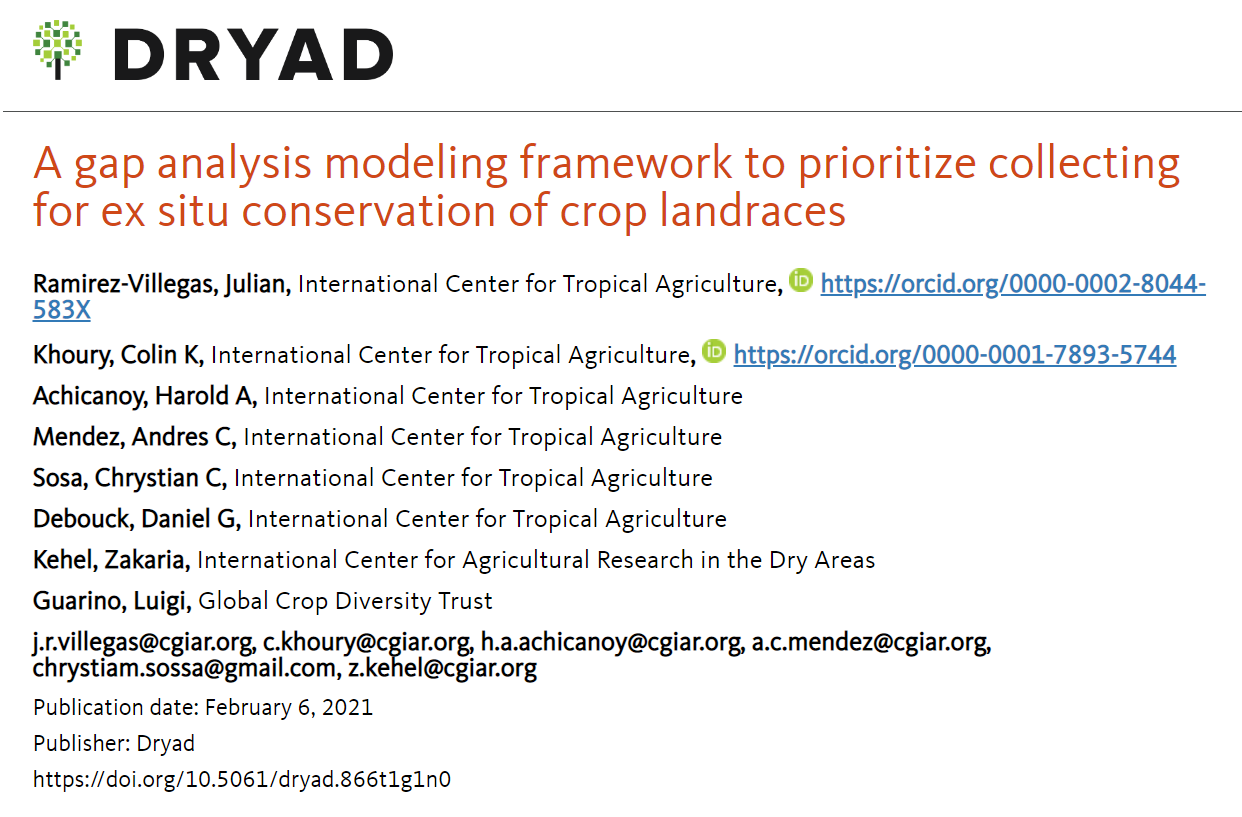Aim: The conservation and effective use of crop genetic diversity is crucial to overcome challenges related to human nutrition and agricultural sustainability. Farmers’ traditional varieties (“landraces”) are major sources of genetic variation. The degree of representation of crop landrace diversity in ex situ conservation is poorly understood, partly due to a lack of methods that can negotiate both the anthropogenic and environmental determinants of their geographic distributions. Here we describe a novel spatial modeling and ex situ conservation gap analysis modeling framework for crop landraces, using common bean (Phaseolus vulgaris L.) as a case study.
Location: The Americas
Methods: The modeling framework includes five main steps: (1) determining relevant landrace groups using literature to develop and test classification models; (2) modeling the potential geographic distributions of these groups using occurrence (landrace presences) combined with environmental and socioeconomic predictor data; (3) calculating geographic and environmental gap scores for current genebank collections; (4) mapping ex situ conservation gaps; and (5) compiling expert inputs.
Results: Modeled distributions and conservation gaps for the two genepools of common bean (Andean and Mesoamerican) were robustly predicted and align well with expert opinions. Both genepools are relatively well conserved, with Andean ex situ collections representing 78.5% and Mesoamerican 98.2% of their predicted geographic distributions. Modelling revealed additional collection priorities for Andean landraces occur primarily in Chile, Peru, Colombia and, to a lesser extent, in Venezuela. Mesoamerican landrace collecting priorities are concentrated in Mexico, Belize, and Guatemala.
Conclusions: The modeling framework represents an advance in tools that can be deployed to model the geographic distributions of cultivated crop diversity, to assess the comprehensiveness of conservation of this diversity ex situ, and to highlight geographic areas where further collecting may be conducted to fill gaps in ex situ conservation.
Ramirez-Villegas, Julian; Khoury, Colin K.; Achicanoy, Harold A.; Mendez, Andres C.; Sosa, Chrystian C.; Debouck, Daniel G.; Kehel, Zakaria; Guarino, Luigi.

